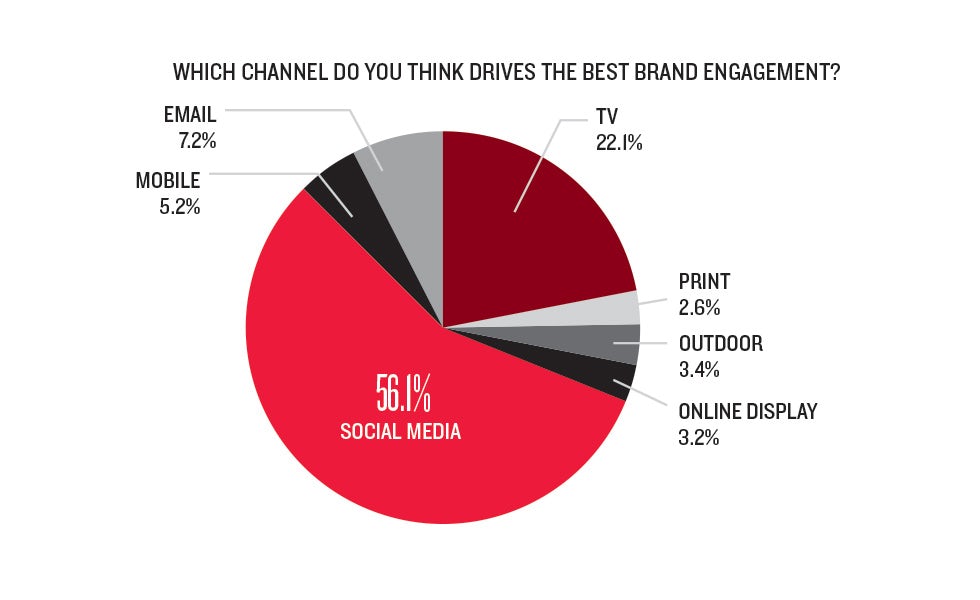
Social media marketing can help you achieve the highest return on investment. This article will show you how to measure engagement rates, determine conversion rate, and compare costs with increased sales. In addition, we'll discuss how to develop a deep understanding of social media ROI. In this article, we'll discuss how to measure social media ROI, and how to calculate it based on your specific business goals. Finally, we will discuss how social media ROI can be measured with other marketing channels such as search marketing and content marketing.
Measuring engagement rate metrics
The engagement rate is a metric used to measure the amount of engagement your audience is getting with your social media posts. It measures the number of times your audience is interacting with your posts through a variety of platforms. An engagement ratio is the sum of all the smaller opportunities. There are many metrics you can use to measure engagement across different social media platforms. To determine which one is most appropriate for your business, you should determine how many people like your post.
In the world of social media, this metric isn't just about eyeballs, so it's essential to track and tie your content to a business's goals and objectives. It may seem difficult to measure ROI but the end result is the exact same - increased engagement equals higher quality audiences. The ability to measure engagement metrics will help you determine if your content is engaging your audience and driving higher sales.

Measuring conversion rate metrics
Measuring conversion rate metrics on RoI social media is critical for your ROI calculation. This metric measures how many people converted from your social media posts into sales. This metric can be used to determine the effectiveness or decrease in conversions of your posts. If Facebook is your primary source for traffic, you may want the number and quality of posts and engagements that you receive from these social media platforms. To calculate your conversion rates, multiply the number of people who visited the Facebook page by the visitors to your website. Once you have a list, you can use this data to average the social data of your competitors and see what their posts have done.
It is crucial to measure conversion rates on ROI social media in order to determine if your efforts have been successful. Social media engagement can be crucial to brand awareness, generating leads, or converting customers. So, it's vital to track your ROI on social media to find the best ways to improve your social media strategy. The best tools will allow you to analyse your social media conversion rates and determine if there are any changes in brand perception that may be causing your low ROI.
Measurement of sales increase versus cost
Measurement of ROI social media involves determining the cost-benefit relationship for a campaign. It is possible to measure the cost and sales of Facebook ads. This is especially helpful if the marketing campaign includes both paid and organic social media marketing. You also need to know how much advertising you spend each day. A vital tool to measure the effectiveness and efficiency of a campaign is social media ROI.
It is crucial to measure ROI through social media for business success. You should tie social media to specific goals that improve your bottom line. Google Analytics is able to track leads, conversions, and other information. You can view the Acquisition report to identify social media sources that customers have referred. YouTube and Facebook can be examples of the sources you should study for ROI. You can measure the return on investment based on your goals.

Developing a deep understanding of social media ROI
Marketing managers need to have a solid understanding of the ROI of social media. Social media campaigns provide businesses with several types of benefits, such as increased brand awareness, customer loyalty, and revenue. To maximize these benefits, it's important to understand which factors increase ROI and which ones have the greatest impact. Without proper analysis and metrics, it's difficult to improve social media ROI.
Despite this, social media has a reputation for being a time-sink. It is a time-consuming process that many businesses spend hours on, only to get a handful of vanity metrics. But, in reality, many businesses are killing it in organic and paid campaigns. It's nearly impossible to avoid social media. Nearly all businesses are on a social platform. How to calculate the social media ROI This is how each activity can impact revenue and have an overall effect on the business.
FAQ
What's the difference between content creation and content marketing?
Content marketing is the belief that all great brands share the same message. They are consistently delivering valuable information that people want and need.
Content marketers know how to create the right content for each channel at different times.
They also know how to implement a successful strategy in promotion and distribution.
This means that they strategically think about what they do, and why it matters.
This is the foundation skill set required to be a successful content marketing professional.
How can you create good content?
The best content should be engaging, informative, and shareable. The best content should have a clear call-to-action, such as a button or link to allow readers to sign up to a free trial, learn more about a product, and/or purchase something from you site. Your content should include visuals to be easily shared on all platforms.
Are there any common mistakes made when creating a content marketing plan?
It is vital to have a plan when planning content marketing strategies. Without a solid plan, your efforts will go unused and cost you money. It's easy to create tons of content, but not know how or where it should be placed.
A well-thought-out strategy for content marketing provides direction, focus, as well as goals. It will help you keep track of everything as you move from one phase to the next. You might start with analyzing which types of posts are generating the highest engagement rates for social media campaigns. You will be able to identify which posts are most likely to drive traffic and which ones won't. These results will help you decide whether to create a series or video blog.
Another mistake that people make is not considering how long their content marketing campaign will last. If you are planning to launch a new site tomorrow, it is a good idea to write some content right away. You might want to wait until your data is more complete if you've been working hard on a content strategy for six months before you publish new material.
Great content takes time. Don't rush yourself or underestimate this step.
If you are a business proprietor and would like to learn more on content marketing, Our guide How To Make Content That Workes is a good choice. It outlines ten steps to create content that works and ensures that your marketing programs are efficient.
What are the 7 steps to content marketing?
The seven-step process to content marketing is:
-
Identify the problem
-
Learn more about what's happening now
-
Get new ideas
-
Turn them into strategies
-
You can test them
-
Measure results
-
Repeat the cycle until you find something that works.
This approach is proven to work for all businesses, large or small.
Statistics
- Forty-seven percent of buyers view 3 to 5 pieces of content before engaging with a sales representative. (mailchimp.com)
- An example of an overarching goal could be: "In 2022, we want to achieve a 20% increase in revenue created by organic content and generate 15,000 MQLs with a budget of $30,000." (semrush.com)
- In fact, would pay more for a better customer experience, and 86% of B2B buyers would pay more. (neilpatel.com)
- Measure your goals with a progress indicator of 0-100%. Make your goals collaborative and transparent (semrush.com)
- Content marketing produces 3X more leads per dollar spent. Content marketing costs 62% less than traditional marketing. (criteo.com)
- This marketing strategy landed Ford a 15.4% conversion rate. (neilpatel.com)
- According to our research, brand awareness, attracting traffic, and generating leads remain the key content marketing goals in 2022. (semrush.com)
- We found that 40% of businesses don't have a documented strategy yet. (semrush.com)
External Links
How To
How to create a video for content marketing?
The best way to communicate with your audience is through content marketing videos. You can connect with your audience by sharing stories that they are interested in. How do you make them stand apart from the rest? Here are some tips to create videos that get noticed.
-
You should first know when creating a video that there's no such thing as "one size fits all." You want to tailor your video to speak directly to your audience. You don't want to make your video irrelevant to anyone who views it.
-
You shouldn't pick the cheapest option when selecting a platform. YouTube, Vimeo and Instagram are just a few of the many platforms that are available. Each platform offers its own benefits and features. You could save money, increase engagement, and make your business more profitable.
-
Subtitles are a must when you're filming! This helps people to understand your language barriers, and makes your videos more easily understood.
-
And finally, remember to ask yourself these three questions before beginning: Who am I talking to? Is this why I am making this video? And what does this video mean to you? When you answer those questions, it will make creating videos so much easier!